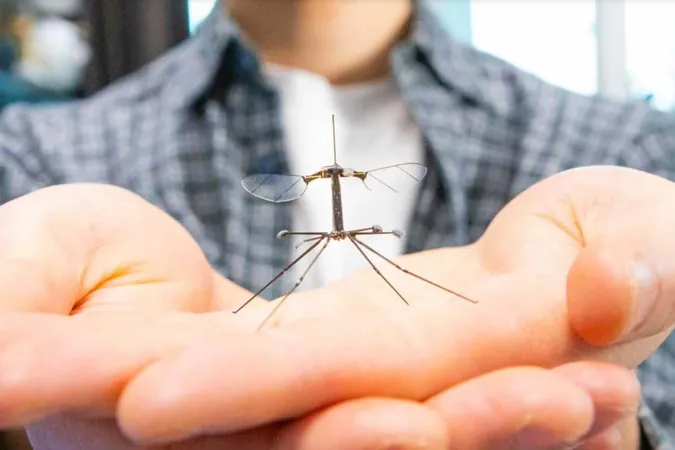
Meet the RoboBee: A Revolutionary Robot Inspired by Nature
2025-04-20
Author: Wei Ling
The Future of Pollination Is Here
Picture a future where miniature robotic bees flit through wildflower fields, assisting real bees in their vital pollination roles. This ambitious dream is being brought to life by researchers at Harvard's Microrobotics Laboratory, who have faced a significant hurdle: achieving a safe landing for their tiny RoboBee.
The Upgraded RoboBee: Legs That Land Like a Pro
After years of experimentation, Harvard scientists have finally equipped the RoboBee with four elegant, crane fly-inspired legs that allow for smooth and controlled landings. These graceful appendages are a game changer, detailed in a new study published in *Science Robotics*. With a gentle landing mechanism, RoboBees are inching closer to a range of exciting real-world applications, including environmental monitoring, disaster response, and artificial pollination.
From Crash Landings to Smooth Landings
Previously, landing the RoboBee could be a precarious endeavor, often resulting in crash landings. As explained by Christian Chan, a PhD student at Harvard, the team’s former approach involved switching off the vehicle above ground and hoping for a safe descent. Now, with the new landing strategy, they’ve transitioned to a more reliable, 'gentle plop-down'—a significant improvement in the tiny robot's functionality.
Drawing Inspiration from Nature
The design breakthrough came from examining the anatomy of crane flies in Harvard's Museum of Comparative Zoology database. The research team, led by Professor Robert Wood, decided to mimic the crane fly’s jointed limbs, enhancing the RoboBee's landing capabilities. The integration of an improved controller also helps the robot reduce its descent speed, leading to a more controlled landing.
Conquering the Challenges of Miniature Robotics
Landing control was particularly challenging for the RoboBee due to its lightweight nature (just 0.004 ounces) and small wingspan (only 1.2 inches). The phenomenon known as 'ground effect,' which affects stability during landing, posed a significant risk of bouncing and tumbling upon impact. Nak-seung Patrick Hyun, a former postdoctoral fellow at Harvard, led tests to equip the RoboBee for successful landings on both solid surfaces and leaves.
Protecting the RoboBee's Delicate Mechanics
In addition to enhancing landing mechanics, the new crane fly legs serve an essential role in safeguarding the RoboBee’s fragile piezoelectric actuators—its equivalent of insect muscles. As the researchers pointed out, these delicate components can easily be damaged, and the compliant legs help absorb impacts during landings to prevent fractures.
What's Next for the RoboBee?
Looking ahead, the Harvard team is keen on developing the RoboBee’s autonomy, aiming to integrate sensor, power, and control systems. This 'three-pronged holy grail' could unlock the full potential of RoboBees, transforming them from experimental gadgets into invaluable tools for real-world applications.

 Brasil (PT)
Brasil (PT)
 Canada (EN)
Canada (EN)
 Chile (ES)
Chile (ES)
 Česko (CS)
Česko (CS)
 대한민국 (KO)
대한민국 (KO)
 España (ES)
España (ES)
 France (FR)
France (FR)
 Hong Kong (EN)
Hong Kong (EN)
 Italia (IT)
Italia (IT)
 日本 (JA)
日本 (JA)
 Magyarország (HU)
Magyarország (HU)
 Norge (NO)
Norge (NO)
 Polska (PL)
Polska (PL)
 Schweiz (DE)
Schweiz (DE)
 Singapore (EN)
Singapore (EN)
 Sverige (SV)
Sverige (SV)
 Suomi (FI)
Suomi (FI)
 Türkiye (TR)
Türkiye (TR)
 الإمارات العربية المتحدة (AR)
الإمارات العربية المتحدة (AR)